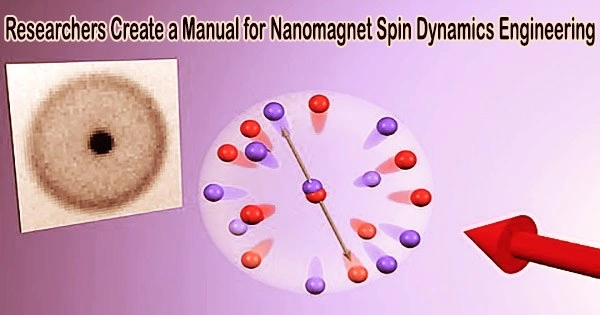A thorough manual for engineering spin dynamics in nanomagnets has been created by an international team of researchers from the University of California, Riverside, and the Institute of Magnetism in Kyiv, Ukraine. This is a significant step toward the advancement of spintronic and quantum-information technology.
Nanomagnets, which are tiny magnets used in the majority of spintronic applications, exhibit rich dynamics of spin excitations, or “magnons,” which are quantum-mechanical representations of spin fluctuations.
A nanomagnet can be thought of as a zero-dimensional system with a distinct magnon spectrum, comparable to the spectrum of an atom, because of its confinement at the nanoscale.
“The magnons interact with each other, thus constituting nonlinear spin dynamics,” said Igor Barsukov, an assistant professor of physics and astronomy at UC Riverside and a corresponding author on the study that appears in the journal Physical Review Applied. “Nonlinear spin dynamics is a major challenge and a major opportunity for improving the performance of spintronic technologies such as spin-torque memory, oscillators, and neuromorphic computing.”
Barsukov explained that the interaction of magnons follows a set of rules the selection rules. These guidelines have now been proposed by researchers using the symmetries of magnetization configurations and magnon profiles.
The magnons interact with each other, thus constituting nonlinear spin dynamics. Nonlinear spin dynamics is a major challenge and a major opportunity for improving the performance of spintronic technologies such as spin-torque memory, oscillators, and neuromorphic computing.
Professor Igor Barsukov
The latest work carries on the efforts to control nanomagnets for cutting-edge computing systems. The group previously presented experimental evidence that symmetries can be exploited to generate magnon interactions.
“We recognized the opportunity, but also noticed that much work needed to be done to understand and formulate the selection rules,” Barsukov said.
The researchers assert that a thorough set of criteria shows the mechanics underlying the magnon interaction.
“It can be seen as a guide for spintronics labs for debugging and designing nanomagnet devices,” said Arezoo Etesamirad, the first author of the paper who worked in the Barsukov lab and recently graduated with a doctoral degree in physics. “It lays the foundation for developing an experimental toolset for tunable magnetic neurons, switchable oscillators, energy-efficient memory, and quantum-magnonic and other next-generation nanomagnetic applications.”
Barsukov and Etesamirad were joined in the research by Rodolfo Rodriguez of UCR; and Julia Kharlan and Roman Verba of the Institute of Magnetism in Kyiv, Ukraine.
The U.S. National Science Foundation, National Academy of Sciences of Ukraine, National Research Foundation of Ukraine, National Science Center Poland, and NVIDIA Corporation, funded the study.





